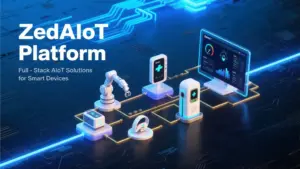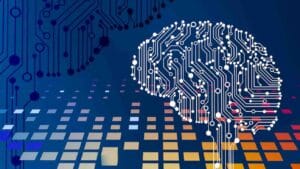When diving into the world of artificial intelligence, it's common to encounter overlapping terms like machine learning, deep learning, neural networks, and large models. This article explains the difference between machine learning and deep learning(machine learning vs deep learning), how neural networks fit in, and how large language models like GPT are shaping the next generation of AI.
1. Difference Between Machine Learning and Deep Learning(Machine Learning vs Deep Learning)
Machine learning focuses on building algorithms that learn from data patterns and improve performance over time. These models require structured data and human-guided feature engineering. In contrast, deep learning is a subfield that utilizes multi-layered neural networks to automatically extract complex features, enabling breakthroughs in vision, language, and speech.
1.1 Machine Learning
Machine learning is a subfield of AI. Its core idea is to train computer models through algorithms and data to enable them to predict or make decisions. Common algorithms include:
- Supervised Learning (e.g., regression, classification)
- Unsupervised Learning (e.g., clustering, dimensionality reduction)
- Reinforcement Learning (e.g., robotic control)
Application Examples:
- Bank credit scoring
- E-commerce recommendation systems
1.2 Deep Learning
Deep learning is a branch of machine learning based on the computational structure of multi-layer neural networks. It processes complex data patterns through automatic feature extraction.
Application Examples:
- Image Recognition: Object detection in autonomous vehicles.
- Natural Language Processing: Voice assistants like Siri and Alexa.
2. How Neural Networks Work
At the heart of deep learning lies the neural network. These networks simulate how human brains process information using layers of interconnected "neurons". We'll explore how inputs move through hidden layers and become powerful predictions, enabling models to classify images, recognize speech, and more.
Application Examples:
- Time Series Prediction: Stock Price Forecasting.
- Medical Diagnosis: Automated analysis of X-ray images.
3. Large Language Models Explained
Large language models (LLMs) like GPT and BERT are built on transformer architectures, trained on massive datasets with billions of parameters. They are examples of how deep learning scaled with compute and data can result in models that understand and generate human-like text. Unlike traditional models, LLMs generalize across tasks such as summarization, translation, and question answering.
Application Examples:
- ChatGPT: Natural language generation.
- DALL·E: Text-to-image generation.
4. AI vs ML vs DL — Clarifying the Hierarchy
To recap:
- AI (Artificial Intelligence) is the broadest concept: machines that simulate human intelligence.
- ML (Machine Learning) is a subset of AI that learns from data.
- DL (Deep Learning) is a further subset of ML, leveraging deep neural networks for advanced capabilities. This hierarchy is crucial for understanding how these technologies relate.
The following chart illustrates their relationships:
+--------------------+
| Artificial |
| Intelligence (AI) |
+--------------------+
|
v
+--------------------+
| Machine Learning |
+--------------------+
|
v
+--------------------+
| Deep Learning |
+--------------------+
|
v
+--------------------+
| Neural Networks |
+--------------------+
|
v
+--------------------+
| Large Models |
+--------------------+5. Connections and Differences
5.1 Connections
- Data-Driven: They all rely on data to improve model performance through training.
- Technological Succession: Neural networks are the foundation of deep learning, which supports large models.
- Unified Goal: Enhancing data processing capabilities to achieve intelligent decision-making.
5.2 Differences
| Feature | Machine Learning | Deep Learning | Neural Networks | Large Models |
|---|---|---|---|---|
| Dependency on Neural Networks | Not always | Required | Core framework | Based on deep neural networks |
| Feature Extraction | Manually designed | Automated | Automated | Automated |
| Data Requirement | Small datasets | Large datasets | Task-dependent | Massive datasets |
| Application Scenarios | Classification, prediction, recommendation systems | Images, speech, NLP | Arbitrary pattern mapping | Generalized task handling |
6. Practical Applications and Case Analysis
6.1 Image Recognition
Case: Autonomous Driving
- Technological Application: Convolutional Neural Networks (CNNs) in deep learning for identifying traffic signs, pedestrians, and obstacles.
- Model Selection:
- Deep Learning Model: CNN.
- Large Models: PaLM 2 for multi-modal support.
- Results: Accuracy improved to 99%, false positives reduced by 30%.
6.2 Natural Language Processing
Case: Intelligent Customer Service
- Technological Application: Large models (e.g., ChatGPT) provide real-time Q&A and sentiment analysis.
- Model Performance:
- Compared to traditional machine learning, response speed improved by 50%.
- Multi-turn dialogue success rate reached 95%.
Chart: Performance Comparison
| Model Type | Accuracy | Response Speed | Data Requirement |
|-------------------|-------------|----------------|------------------|
| Machine Learning | 70%-85% | Slow | Moderate |
| Deep Learning | 85%-95% | Fast | High |
| Large Models | 95%+ | Very Fast | Very High |6.3 Industrial Forecasting
Case: Smart Grid
- Technological Application: Neural networks to predict power consumption peaks and optimize energy allocation.
- Advantages:
- Prediction accuracy exceeds 92%.
- Reduces energy waste and saves operational costs.
7. Trends and Summary
7.1 Technological Trends
- Continuous Evolution of Large Models: Parameter scales will expand, enhancing task generalization.
- Model Lightweighting: Optimized models for edge devices are becoming a new focus.
- Multi-Modal Integration: Unified processing of images, text, and speech will become mainstream.
7.2 Application Expansion
- Healthcare: Diagnostic assistance based on large models.
- Education: Personalized learning resources.
- Finance: Risk prediction and investment strategy optimization.
7.3 Summary
Machine learning, deep learning, neural networks, and large models collectively form the technological hierarchy of AI. They complement each other at different levels, playing irreplaceable roles from foundational algorithms to complex task implementations. Understanding their distinctions and connections enables enterprises and researchers to select suitable technical solutions, promoting widespread AI applications across industries.
FAQ Section
Q1: What’s the difference between machine learning and deep learning?
A1: ML uses algorithms that learn from structured data, while DL uses neural networks to process unstructured data like images or language automatically.
Q2: How do neural networks relate to deep learning?
A2: Deep learning is powered by deep neural networks. These layered structures learn data representations at multiple levels, making DL models more flexible and powerful.
Q3: What are large language models, and why do they matter?
A3: LLMs like GPT are trained on huge corpora and perform multiple tasks without task-specific fine-tuning, enabling scalable, general-purpose AI applications.
Looking for a Custom AI Solution?
At ZedIoT, we specialize in end-to-end AI development: including ML model training, neural network architecture, and LLM-based automation. Let’s turn your ideas into intelligent systems.
???? Get your free demo & proposal



